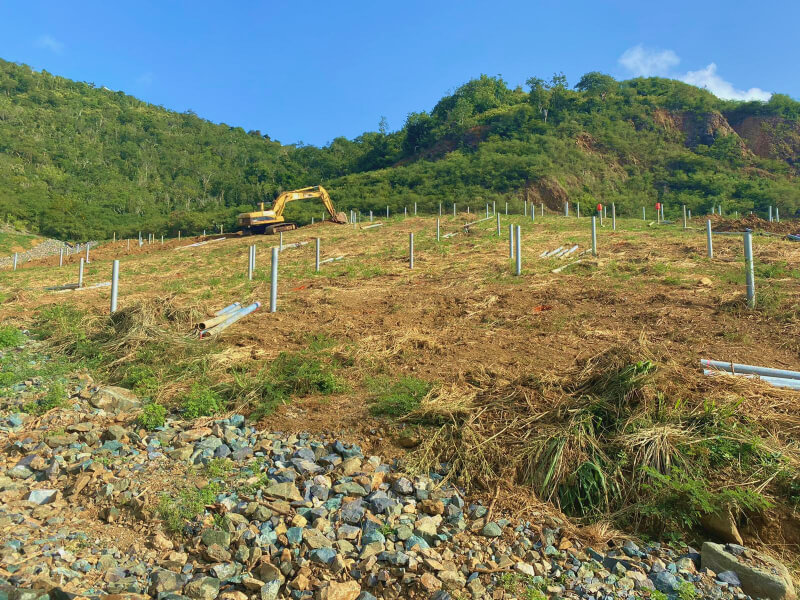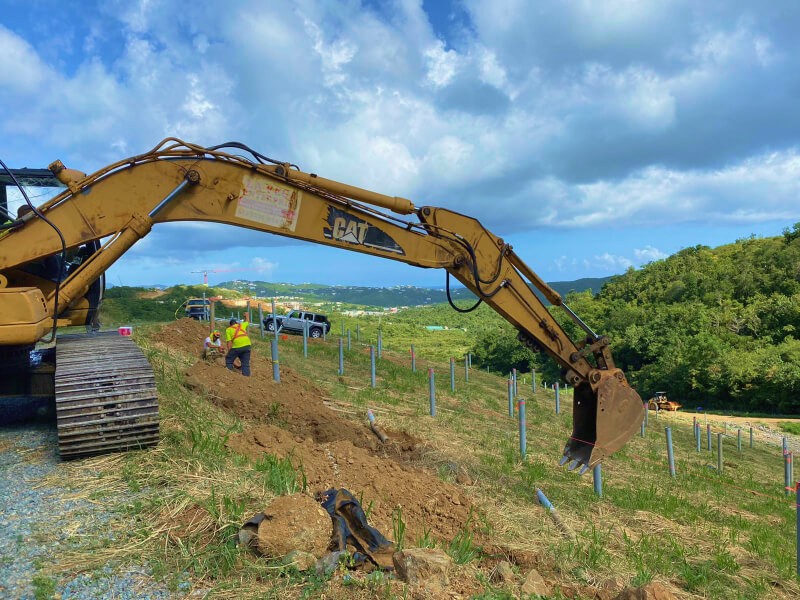PRI Engineering Provides Keen, Extreme Weather Geotechnical Services for a Caribbean Solar Project
PRI Engineering has been retained by local authorities and solar developers to provide geotechnical services for a major solar project reconstruction in St. Thomas, U.S. Virgin Islands. The primary area of concern for this project is the potential wind load due to their volatile hurricane season, which PRI Engineering is specialized in designing for.
Several PRI Engineering employees have travelled to the site in order to monitor the installation of driven piles and perform Construction Quality Control (QC). They report back to the P.Eng. and provide information on the status of the project. In 2017, Hurricane Irma devastated the area and destroyed the previous solar project. This is why it is so important that the new solar racking, foundation, and modules are safely installed and can withstand potential extreme weather in the future.
Prior to the hurricane, the solar project reached a capacity of roughly 4 MW, and once reconstructed and redeveloped will have a capacity of just over 5 MW. This energy contributed to the local electric grid is extremely important for residents who were left without power when the old solar project was destroyed in 2017.


Protecting Solar Racking and Foundation Health During a Hurricane
The best way to prevent damage from high wind loads due to a hurricane is to design the solar racking and foundation with the intention that they will experience high amounts of stress. Designing around high wind loads often requires the completion of many laboratory and field tests to determine the best foundation type to use.
The characteristics of the soil and surrounding environment, including the slope stability of the land is important to analyze as a way to protect solar racking and foundation health during a hurricane. Depending on the proximity to the shoreline and the type of subgrade material underneath the foundations, the solar project will have to be designed and installed in a manner that allows for maximum movement without failure.
Ensuring the new solar project can handle potential high wind and rain loads in the future is important because the local community depends on these projects to power their homes and businesses, especially during a storm. As climate change continues to increase the frequency and severity of hurricanes and other natural disasters, designing with extreme weather in mind can prevent millions in damage.
If you would like to learn more about the geotechnical services PRI Engineering offers solar developers, contact info@priengineering.com or visit our solar geotechnical page.
